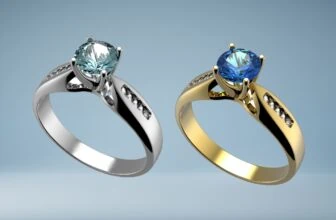
Table of Contents
Goshenite is a member of one of the most illustrious mineral families and the white version of stones like emeralds, morganite and aquamarine which all belong to the beryl family.
Sometimes called the ‘mother of gemstones’, goshenite’s colorless or white appearance makes it a good choice for engagement rings and works even as a diamond substitute.
Here’s what you need to know before you buy goshenite.
What is Goshenite?
Sometimes called white beryl, goshenite is the colorless variety of beryl that’s found without any trace elements. It’s mined from a number of regions around the world, with notable locations including the USA, Brazil, Canada, Germany, Ireland and Madagascar.
Goshenite Color and Clarity

Goshenite is distinguished by its absolute transparency and purity. It stands out as the colorless variety of beryl, often resembling a clear glass or crystal in appearance. This immaculate clarity allows it to capture and reflect light in a subtle yet captivating manner. Without the chromophoric agents that give other beryls their distinctive colors, goshenite remains untinted and pristine. Its transparency can sometimes be mistaken for diamonds, but unlike diamonds, goshenite possesses a softer sparkle.
This ethereal quality makes it an elegant choice for those seeking a gemstone that exudes understated elegance. In essence, the beauty of goshenite lies in its simplicity—a clear, unembellished testament to nature’s marvels.

This is a transparent gemstone, with most specimens appearing eye-clean with no visible inclusions. It can sometimes be cloudy or even opaque, but these varieties aren’t often used in jewelry making.
Clear goshenite pieces are very beautiful and make for gorgeous jewelry designs. Check your goshenite stone carefully prior to purchase to ensure that there aren’t any unsightly inclusions present within the stone.
A fun fact – goshenite was used to create lenses for the first eyeglasses due to its clarity and transparency in the early 13th century in Italy. At the time, goshenite crystals were clearer than glass.
Goshenite Cut
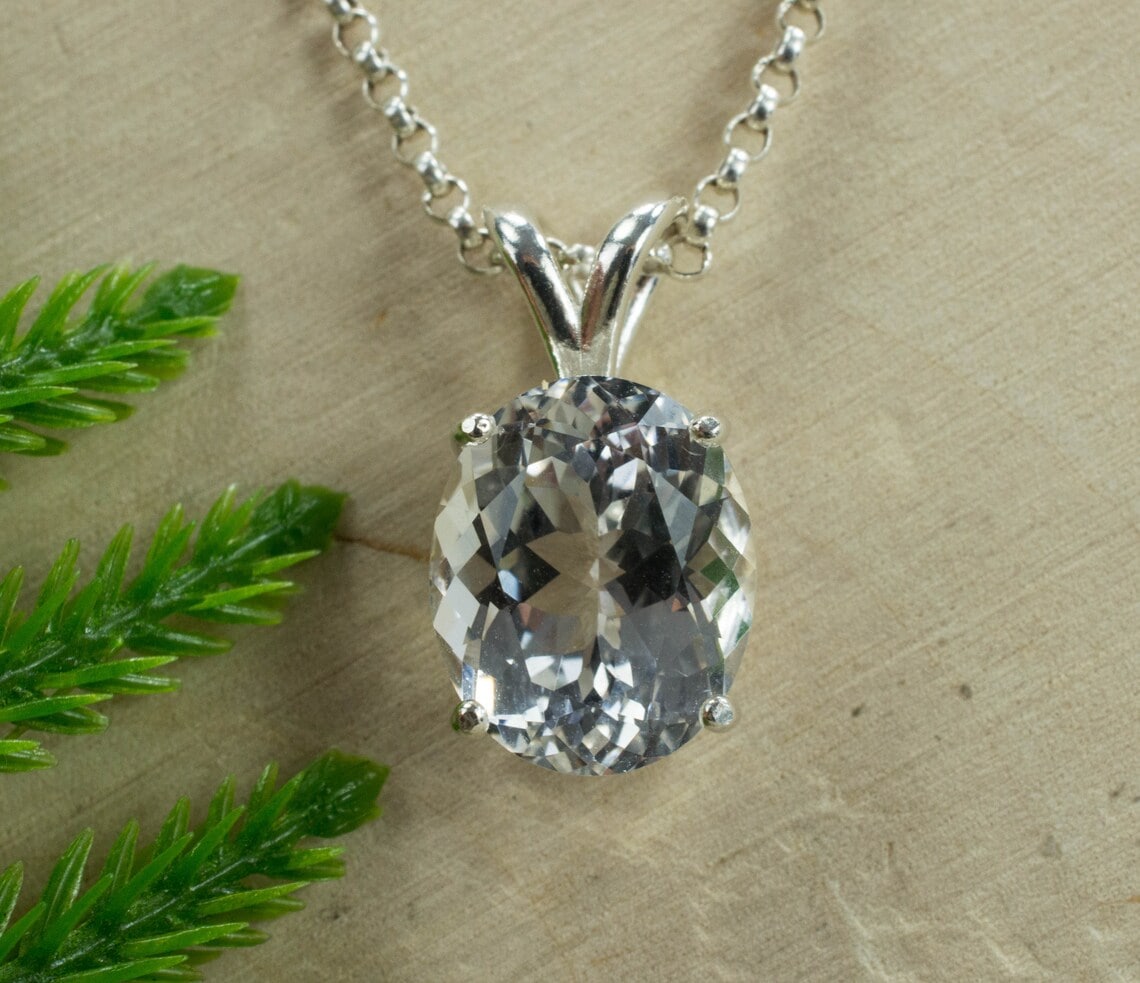
Just like any other beryl, goshenite can be cut into any popular gemstone shape. It’s commonly faceted into brilliant cuts to emphasise its light performance and to give it depth. A well-cut goshenite can appear brilliant with good light performance.
Sometimes goshenite is cut en cabochon to highlight its luster and color. Cabochon cuts are especially popular on white goshenite stones, which are milky in appearance.
In addition, rough goshenite gemstones are sometimes used as is without cutting or polishing, especially in hippie and bohemian style jewelry designs.
Goshenite Value

While goshenite is a beautiful stone in its own right, its value as a gemstone is quite low. It’s not a mainstream stone nor is it in much demand compared to other beryls like emerald and morganite. For example, you can buy a 1.65 carat goshenite as seen in this ring for just over $100 but a similar morganite ring might cost about $400.
This is partly due to the fact that goshenite lacks the color and uniqueness of other types of beryls which are known for their specific colors and beauty (e.g. aquamarine is blue, morganite is salmon and emerald is green). Having said that, it’s important to note that high-quality goshenite can sometimes command high prices.
Goshenite Treatments and Enhancements

Goshenite is not known to be treated or enhanced as it’s an inexpensive and abundantly found gemstone. However, it can sometimes be treated to give it vibrant colors like blue, green, purple and pink via irradiation.
1. Heat Treatment
Heat treatment for goshenite is like giving the gemstone a warm bath to help it look its best. By carefully heating the stone, any unwanted colors or tiny imperfections might fade away, making the goshenite clearer and more beautiful. Imagine an ice cube with tiny impurities; when it melts, those impurities can disappear. Similarly, heating the goshenite can improve its appearance.
However, it’s essential to know that not all goshenites undergo this process, and natural, untreated stones can be more valuable. Think of it as two cakes: one made from scratch and the other from a box mix. Some people prefer the homemade touch, just like some gem lovers prefer untreated stones.
2. Filling

Goshenite filling treatment works by filling in any small cracks or openings in the gemstone with a clear substance. This makes the goshenite look smoother and more perfect. It’s like using clear glue to fix a cracked vase.
While the filler makes the goshenite look better, it’s always good to know if this treatment has been done, as some gem enthusiasts prefer stones in their natural state, just like some people love items with a bit of character and history.
3. Coating
Goshenite coating treatment involves adding a thin coat on the gemstone, making it sparkle more and protecting it from little scratches. Remember, this “polish” on the gemstone isn’t permanent and can wear off over time, so it’s good to know if a goshenite has this coat, especially if you like your gemstones in their natural, unpolished state.
Goshenite vs. Diamond

Diamonds remain the number one choice for engagement rings and jewelry in general, but it’s also an expensive gemstone and can leave a big hole in your wallet. Goshenite makes an excellent diamond alternative as it’s durable and affordable and unlike cubic zirconia, goshenite is a natural gemstone in its own right.
For those who know about it, goshenite is becoming a popular option for couples choosing diamond alternatives. To the untrained eye, it can be difficult to tell the two gemstones apart.
However, the main differences between the two is in relation to its brilliance and hardness. Diamonds are known for their excellent light performance whereas goshenite is still brilliant, especially if well-cut, but this brilliance doesn’t match that of diamonds.
With regular maintenance to keep dirt and grime build-up off the surface of the stone, goshenite can remain sparkling and almost diamond-like for a very long time.
Goshenite in Jewelry

Goshenite, with its clear and luminous charm, is used in a wide range of jewelry pieces, each capturing the essence of its serene beauty. One of the most sought-after applications is in rings. From delicate solitaires that allow the goshenite to be the star, to more elaborate designs paired with other gems, its versatility is undeniable.
Engagement rings showcasing goshenite offer couples a unique symbol of their bond, a pristine stone signifying pure love. Earrings are another beautiful representation. In stud form, goshenite imparts a touch of subtle elegance, whereas in drop or chandelier designs, it dances with light, making a more pronounced statement.
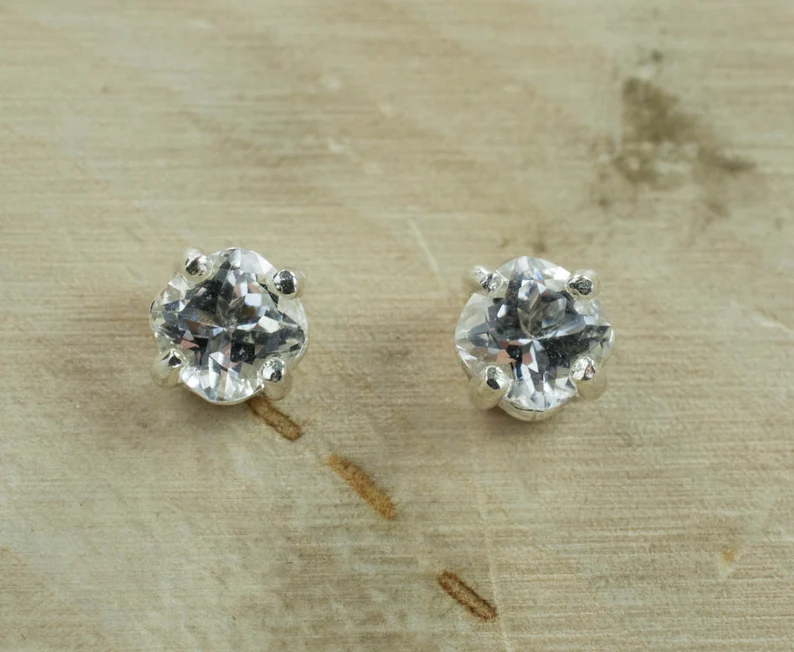
Necklaces and pendants, whether they feature a singular goshenite centerpiece or multiple gems in a clustered design, exude a timeless elegance that suits both casual and formal wear. Bracelets adorned with goshenite, be it a bangle or a tennis bracelet, wrap the wrist in an ethereal glow.
Goshenite brooches and pins inset with goshenite add a touch of vintage-inspired glamor. Its neutral palette and radiant sparkle make it a favorite among jewelry designers, offering endless opportunities to craft pieces that range from minimalist to extravagant, all while celebrating goshenite’s pristine beauty.
Goshenite Engagement Ring
A goshenite engagement ring is a good idea as the stone can be worn on a daily basis, much like morganite engagement rings. Also, because the color is neutral like a diamond, goshenite matches any skin tone and suits any outfit color or style.
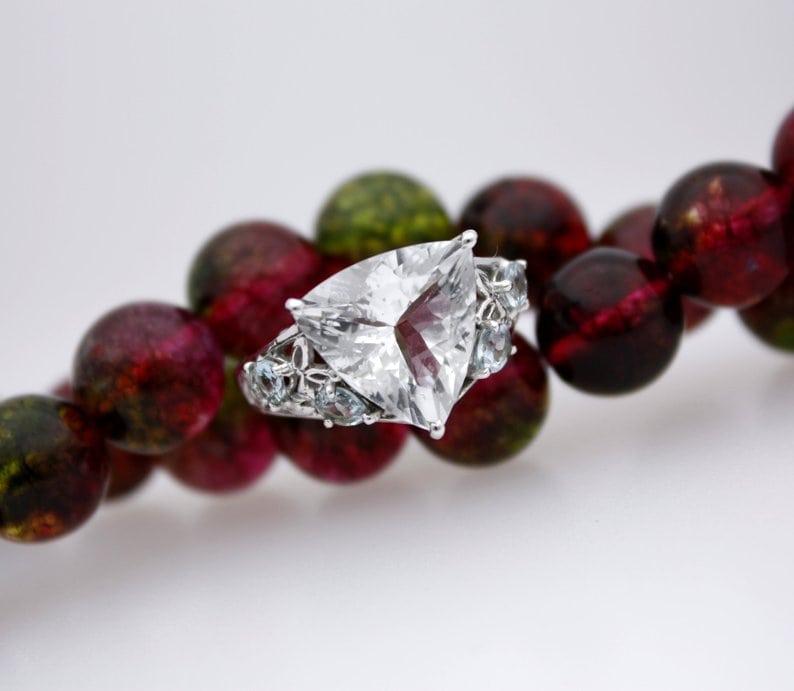
As goshenite can be cut into any suitable gemstone shape, you have many options in designing your own goshenite engagement ring. Pair goshenite with other gemstones for a more vibrant and colorful look. You can also opt to have a halo of diamond melees surrounding your goshenite as that will add to its brilliance.
While goshenite engagement rings don’t require specific protective ring settings, a halo or bezel setting will add an extra buffer of protection and keep it from getting scratched or knocked.
How to Take Care of Goshenite
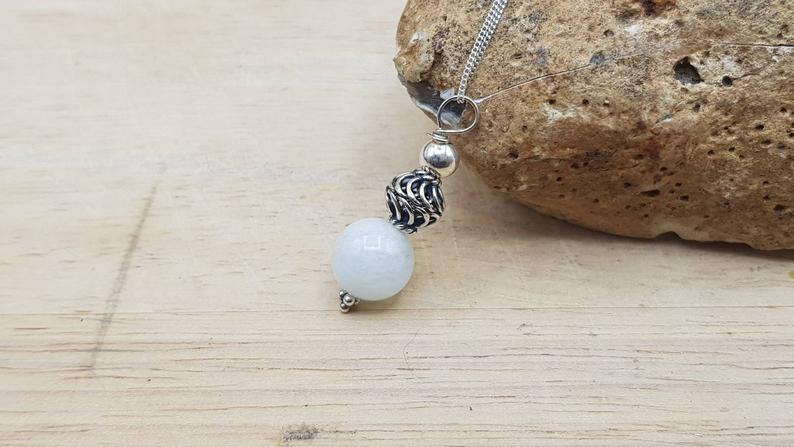
Goshenite, boasting a ranking of 8 on the Mohs scale of hardness, stands as a durable choice for daily wear jewelry. Its resilience surpasses that of emeralds, which often contain inclusions and are regularly treated with fracture-filling. These inclusions can compromise the gem’s strength, whereas gem-quality goshenite remains robust due to its relatively inclusion-free structure.
However, like all gemstones, goshenite requires care to maintain its luster. When the stone accumulates dirt, it can appear clouded with an oily sheen. Regular cleaning ensures its pristine appearance is preserved. A gentle cleaning solution of mild soap in warm water, paired with a soft cloth or delicate toothbrush, works best. Thorough rinsing is essential to remove soap residues. Despite its hardness, it’s crucial to avoid ultrasonic cleaners; their powerful vibrations can potentially harm the stone.
Storing goshenite demands special attention. Keep it separate from harder gemstones like diamonds or sapphires, which might scratch its surface. In the same vein, since goshenite is tougher than many other stones, ensure it’s segregated from softer gems to prevent it from inadvertently scratching them. Lastly, always avoid drastic temperature changes or direct exposure to harsh chemicals, as these can affect the gem’s integrity and appearance.
Meaning and Symbolism of Goshenite

Goshenite, the clear and colorless variety of beryl, carries with it a rich tapestry of symbolism and meaning, much of which revolves around its untainted purity.
1. Purity and Clarity
The transparent nature of goshenite symbolizes purity of thought, clarity of mind, and untainted intentions. It’s believed to help in clearing confusion and seeing things with an unclouded perspective.
2. Truth and Honesty
Just as there is nothing hidden within its clear structure, goshenite is seen as a stone of truth, encouraging honesty in communication and actions.
3. Enhancing Mental Function
Linked to its clear nature, goshenite is thought to promote mental clarity, helping its wearer in decision-making processes and enhancing their analytical skills.

4. Spiritual Enlightenment
The uncolored quality of the gem is seen as a representation of spiritual purity and enlightenment, connecting the wearer to higher realms of consciousness.
5. Emotional Balance
Goshenite is believed to help in balancing emotions, preventing extreme emotional highs and lows and promoting tranquility.
6. Dreams and Intuition
Some believe that goshenite aids in understanding and remembering dreams, acting as a bridge between conscious and subconscious realms.
While these symbolic meanings are derived from various cultural and historical contexts, the true significance of any gemstone, including goshenite, often resonates differently with each individual, based on personal experiences and beliefs.
Origin and History of Goshenite
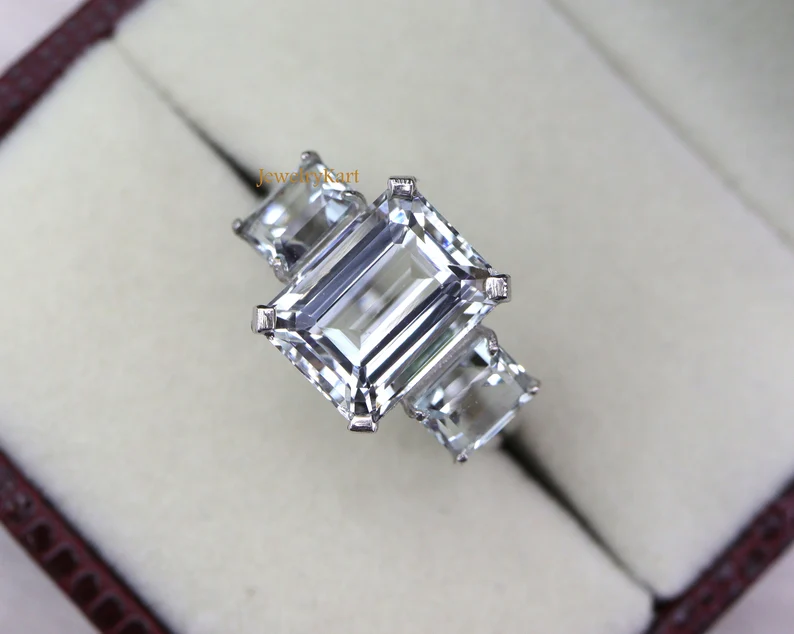
The name “goshenite” was derived from Goshen, Massachusetts, where the mineral was first described and identified. However, goshenite deposits are found not just in the United States but also in many parts of the world, including Brazil, China, Mexico, Russia, and Canada, among others.
Historical Significance of Goshenite

Historically, goshenite held a unique significance. In ancient civilizations, the gem’s unmatched clarity made it a preferred material for crafting eyeglasses and lenses. This wasn’t just for the literal advantage of clearer vision; there was a symbolic belief that goshenite allowed wearers to perceive the world and its intricacies with enhanced insight. Its spiritual resonance extended through centuries, with many attributing the gem with metaphysical properties. The clear beryl was seen as a conduit to clearer thought, enhanced self-discipline, and fostering genuine honesty in interpersonal connections.
Despite being overshadowed by its vibrant relatives in the beryl family, gemologists have always revered goshenite for its immaculate purity. This appreciation took a contemporary turn when the gemstone became a sought-after alternative to diamonds in modern jewelry. Its affordability, combined with a clarity that rivals expensive stones, has seen it gracefully set in pieces that emphasize its untouched and clear nature.
To encapsulate, goshenite, though not as flamboyant as some gems, stands out with its clear essence. Across history, from ancient lenses to modern jewelry, its consistent symbolism of clarity, purity, and genuine truth ensures its enduring significance.
Where to Buy Goshenite Jewelry
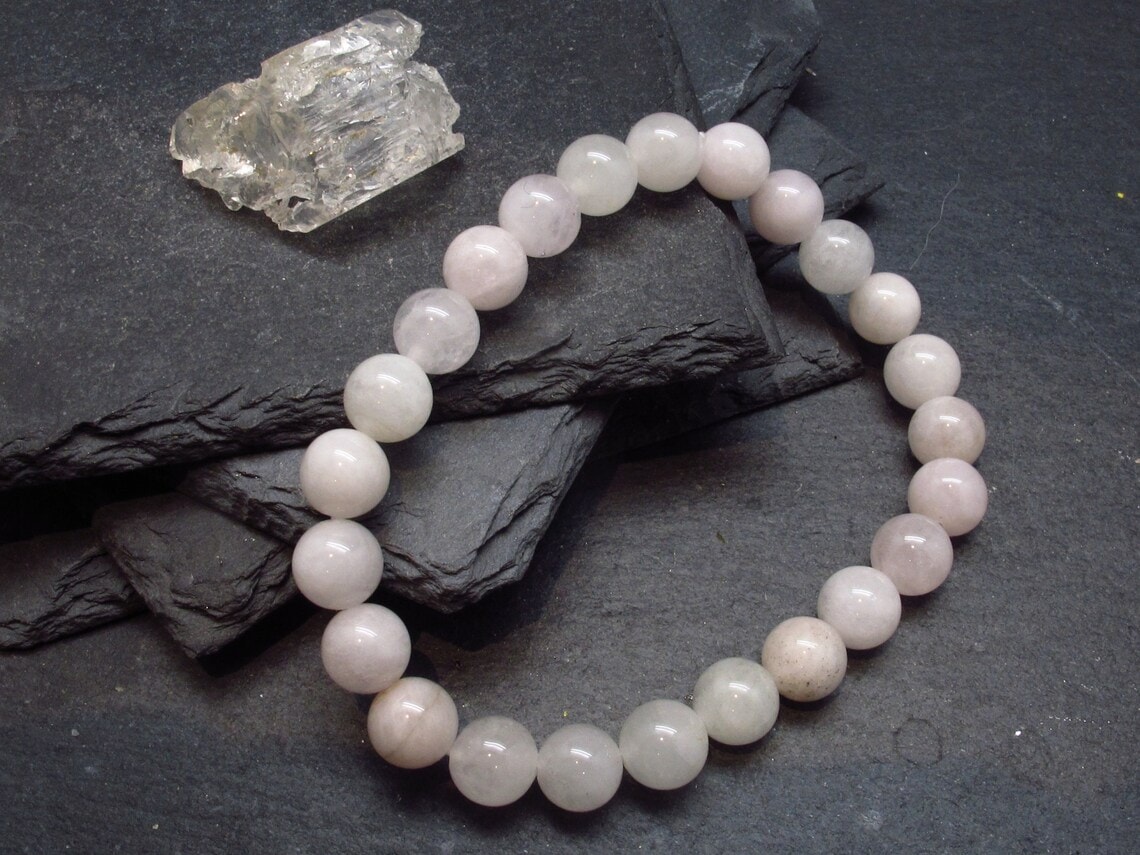
Buying goshenite jewelry online can be quite an experience, especially with numerous renowned retailers offering an array of choices. Here’s a brief overview of some of the most prominent stores:
1. Etsy
Etsy stands apart as a haven for artisanal and vintage jewelry pieces. For those looking for one-of-a-kind goshenite jewelry, crafted with personal touch and artistry, Etsy is a go-to destination. With numerous artisans showcasing their creations, you’re bound to find something that resonates with your style. Browse Etsy here.
2. Amazon
A global marketplace, Amazon’s vast product range unsurprisingly includes jewelry. Amidst its offerings, one can find both artisanal and vintage goshenite pieces, making it a diverse platform for those looking beyond conventional jewelry stores. Check it out here.
Always ensure you conduct due diligence when buying online, particularly from platforms like Etsy and Amazon. Check product descriptions, seller ratings, and reviews to ensure the authenticity of your chosen goshenite piece.
Wrapping Up
Goshenite jewelry, with its pristine clarity, offers a unique blend of history, elegance, and affordability. While it may not boast the flamboyance of some colored gemstones, its untinted beauty resonates with those valuing purity and understated elegance.
From artisanal crafts on Etsy to modern designs on major platforms, goshenite stands as a testament to timeless beauty. For those seeking a piece that embodies both tradition and modernity, goshenite is truly a gem worth considering.



